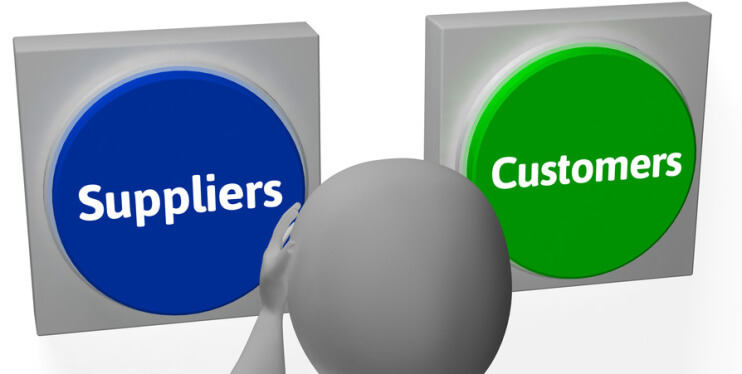Using the right term.
If you are telling a story about climbing a mountain, you would not use the term ‘descending the mountain’ when talking about going up the mountain. But when it comes to logistics we are not so sure about the terms to use.
I have read articles this past week where the authors talk about value chains. But the description and examples given were all about supply chains. Yes there is a very real difference between the two. Briefly, a value chain creates value for the customer or consumer by identifying and maintaining the sales channels and their products. Supply chains ensure availability of the products through each of the sales (or distribution) channels.
Value chains therefore start with end users in each of their demand channels and flows back to the suppliers. The supply chains start at farms and mines and flow through to the end user. The two are therefore different but complementary. A mechanism is needed that brings them together on a regular basis and this is called sales and operations planning (S&OP) – even though some organisations use slightly different terminology, so they can appear more advanced.
When thinking about value chains, there are four broad product industry types, each with their own value chain methodology. These are:
- consumer packaged goods (CPG), including short shelf-life and cool handling (chilled and frozen) products;
- fast moving consumer goods (FMCG), that sell durable products, including electronics, household products and apparel;
- asset intensive products (e.g. oil & chemicals, metals processing, pulp & paper) and
- engineered products, including automotive & transport, aerospace and medical
A value chain, which is sometimes called a demand chain, is defined by the market segment in which it competes, typically the product type, customer type or sales channel. For example, the value chain for fresh apricots exported from Australia to Hong Kong is different from the value chain for packaged dried apricots sold in supermarkets around Australia.
Each value chain contains the steps to create value for the end user – the customer or consumer. And that’s the job of marketing. In my book A Framework for Supply Chains, I discuss the value chains for a CPG business that sells frozen and chilled free-range chicken. The steps back through the value chain that I identify are:
- who are the groups of consumers (e.g. family, students, retirees) and what are their needs in terms of cuts, preferred packaging, added value and price points?
- what are the sales channels required to service the different consumer groups?
- the products required to satisfy consumer needs. Pack sizes (shipper/carton size and pallet load) to meet the needs of retail customers
- the sales campaigns (and the expected variation of sales volumes from the ‘normal’ pattern) required to raise consumer awareness and ongoing demand
- product profitability and margins at each step back through the value chain. Where are the costs of the product caused? What is the split of the consumer spend by each organisation in the chain? What are the assessed or assumed profit margins at each stage in the value chain?
Bringing value chains and supply chains together
It is best that the supply chain group in a business becomes involved at the time of product development. At this stage, the product must be translated into supply chain requirements concerning handling and control processes, from both an effectiveness and efficiency viewpoint. As an example of early involvement, a pallet of new product was tested for delivery across the country by rail. On arrival, the consignment was completely shredded – the vibration over 4,000 kms of rail journey had destroyed the product and the protective cartons! At least there was time remaining for some redesign, rather than a last minute panic.
For a consumer product, the supply chain group should ideally start at the farm and mine to understand the supply situation at the nodes and the challenges within links between the nodes of the supply network. This helps to ensure availability of the product through its life cycle. There have been many examples of brand companies caught unaware by problems at level three suppliers or delays at ports.
With the map of the supply chains completed, the value chain model must then be overlaid, so all can understand the challenges. These challenges will most likely involve the three critical elements of supply chains: inventory, capacity and lead times. Discussions about these elements must be done holistically, because as one changes, it can often affect the other two; however if the supply chain and logistics group does not have responsibility for all three, they become difficult to reconcile.
If all affected groups in the business accept the structure of the demand and supply chains, the next step is to bring the two parts of the business together on a monthly basis. This is to aim for a balance between demand and supply and is the role of sales and operations planning (S&OP). How it should work will be discussed in a future blog.
So, there is a difference between value chains and supply chains. Used correctly, it can reduce the confusion within groups in your organisation who are not deeply involved in the area. As an aside, there is also a difference between a supply chain, a number of supply chains and a supply network, but again, that is for another blog.

